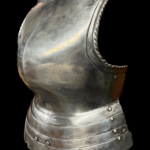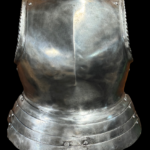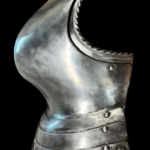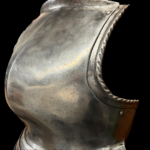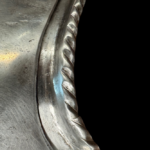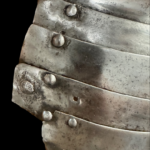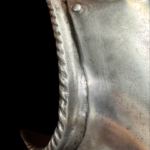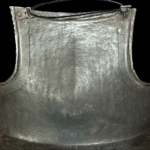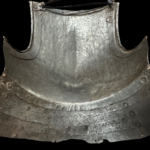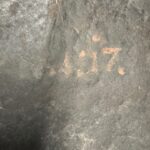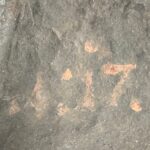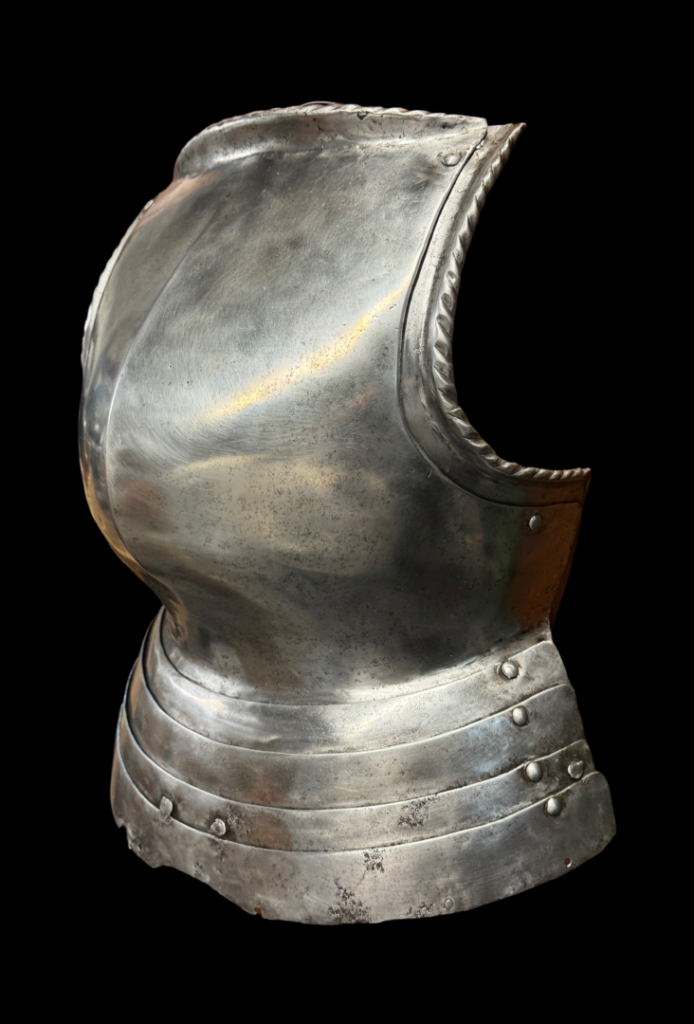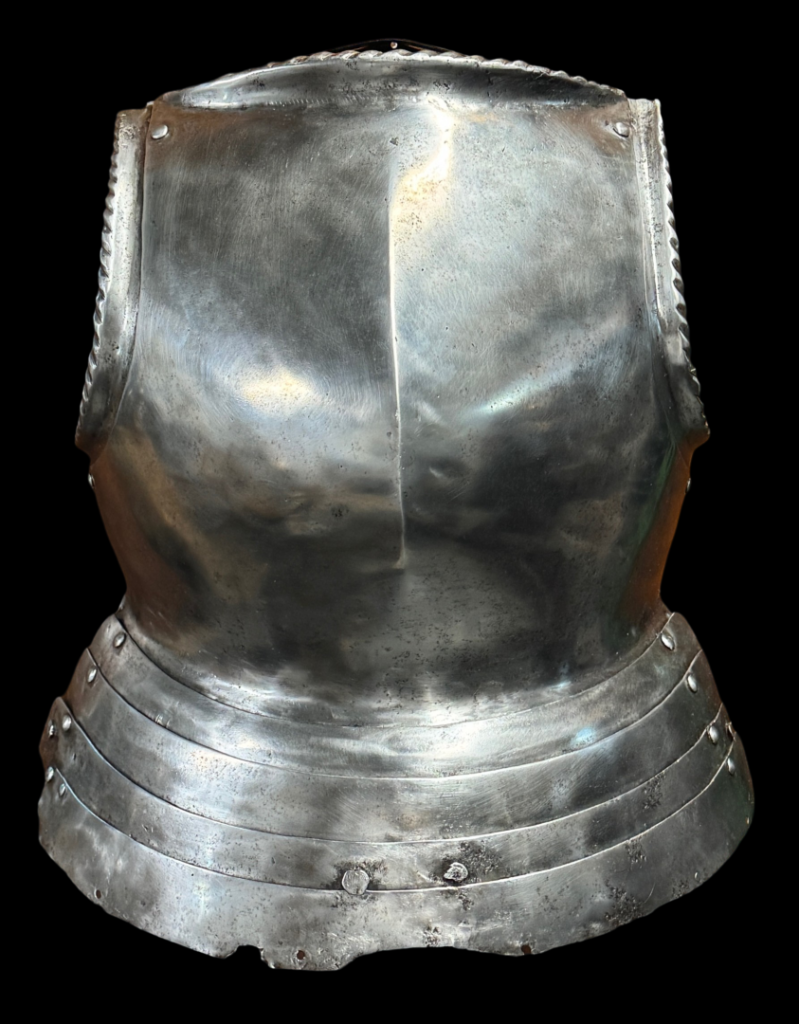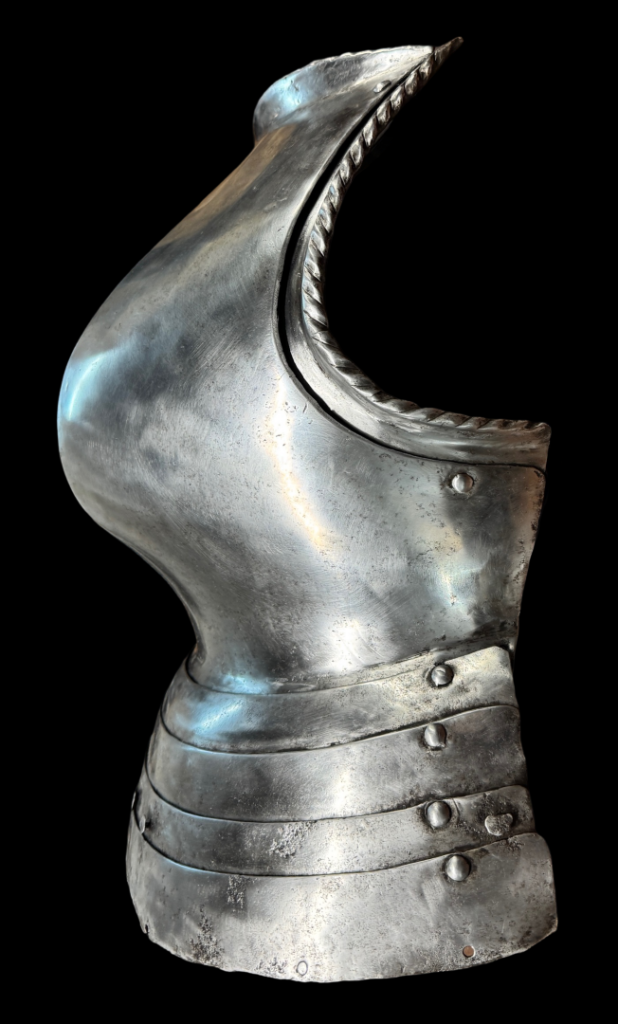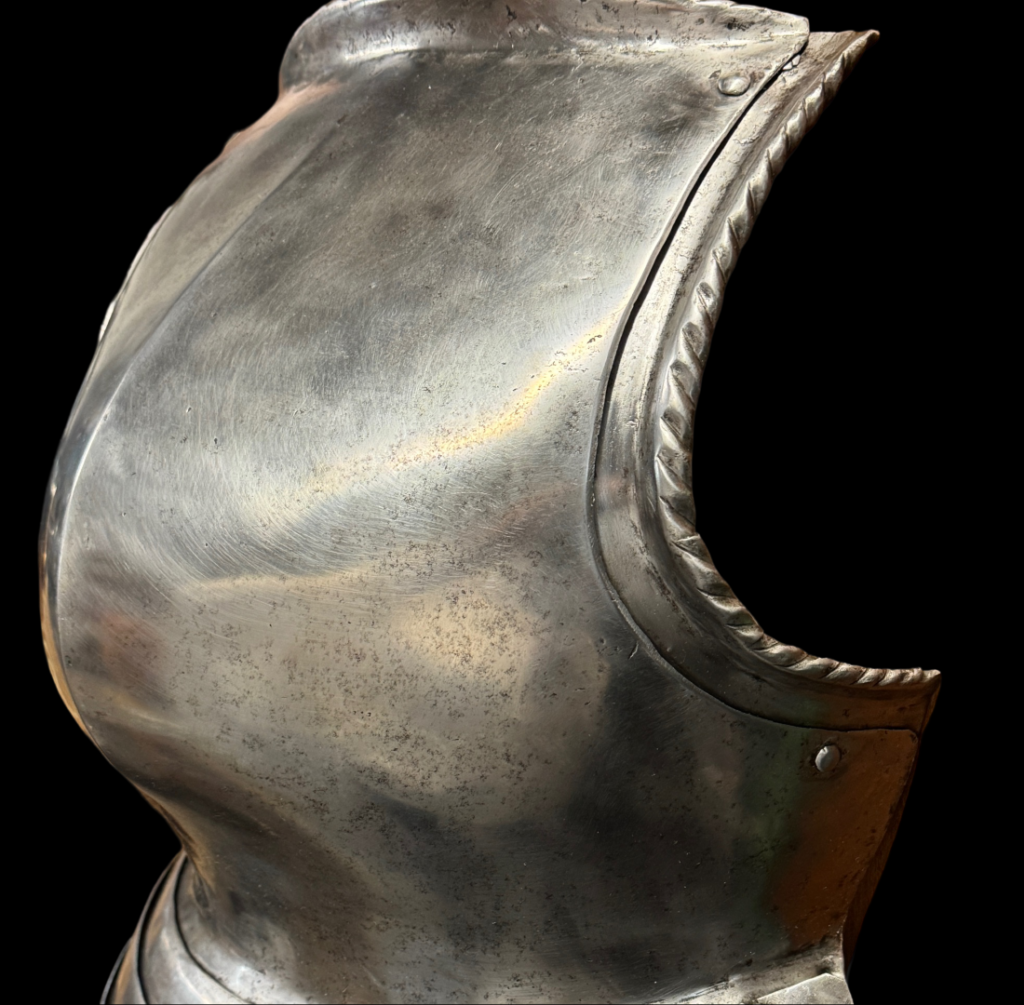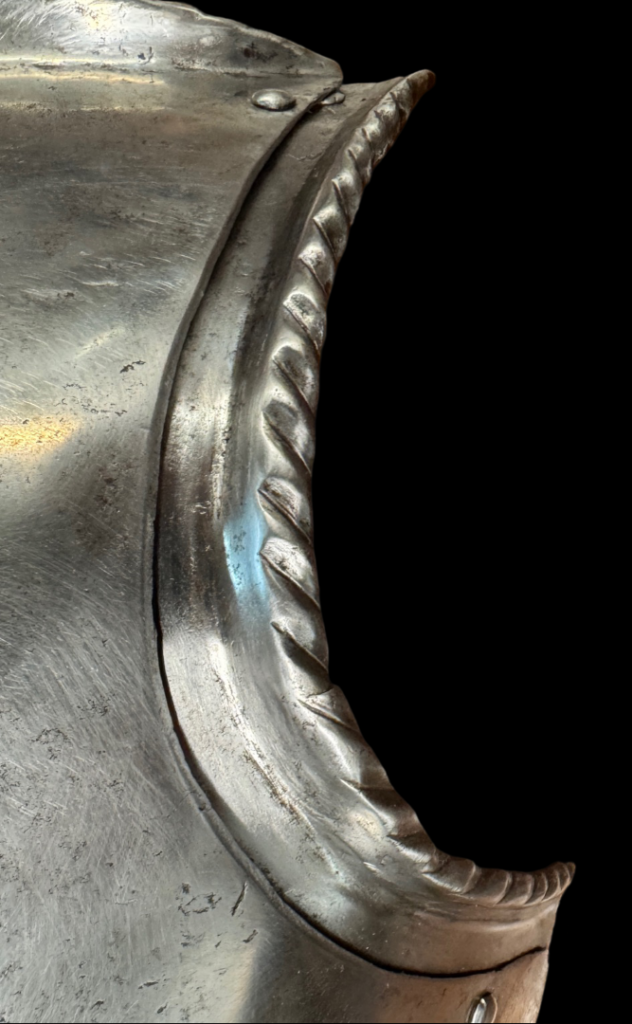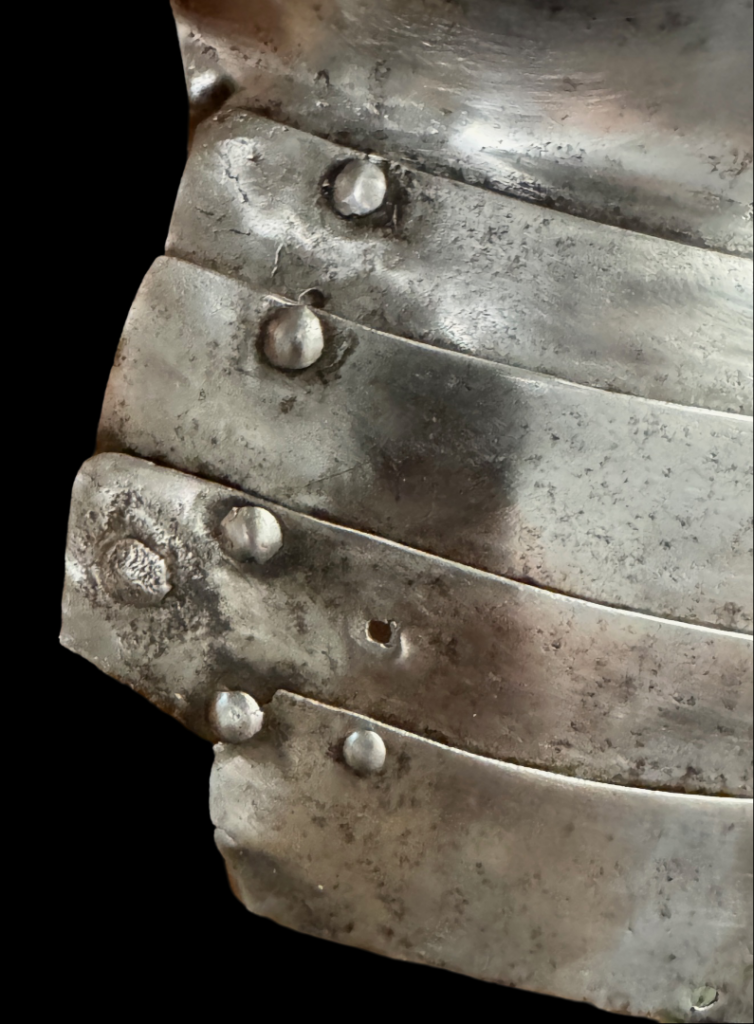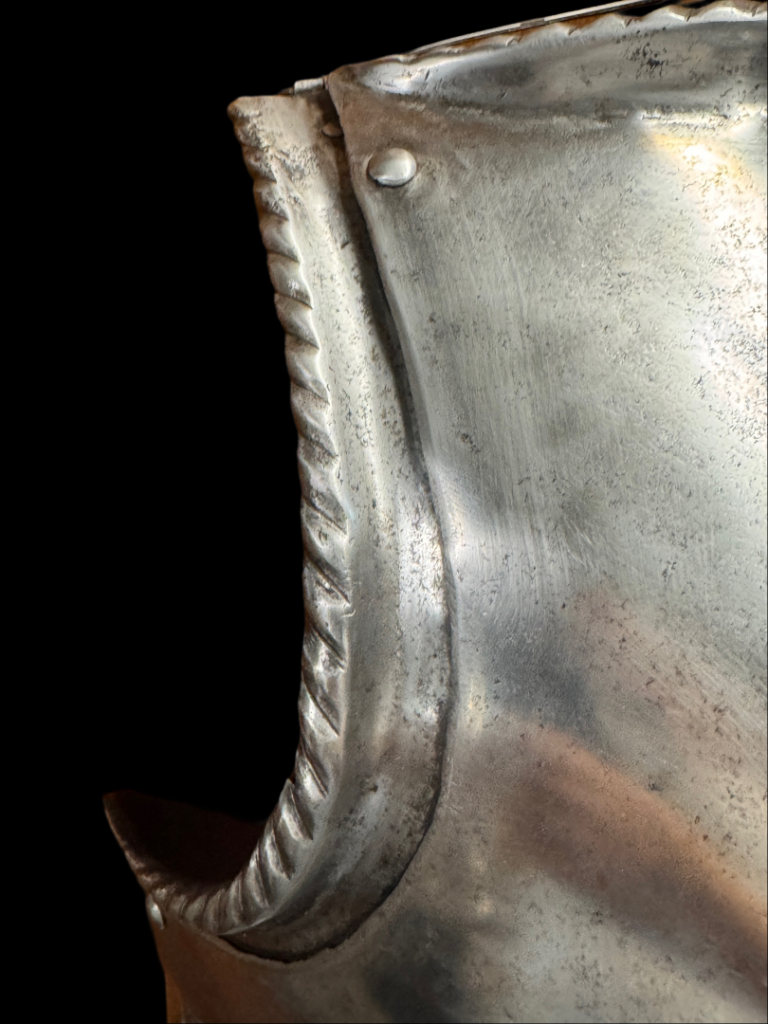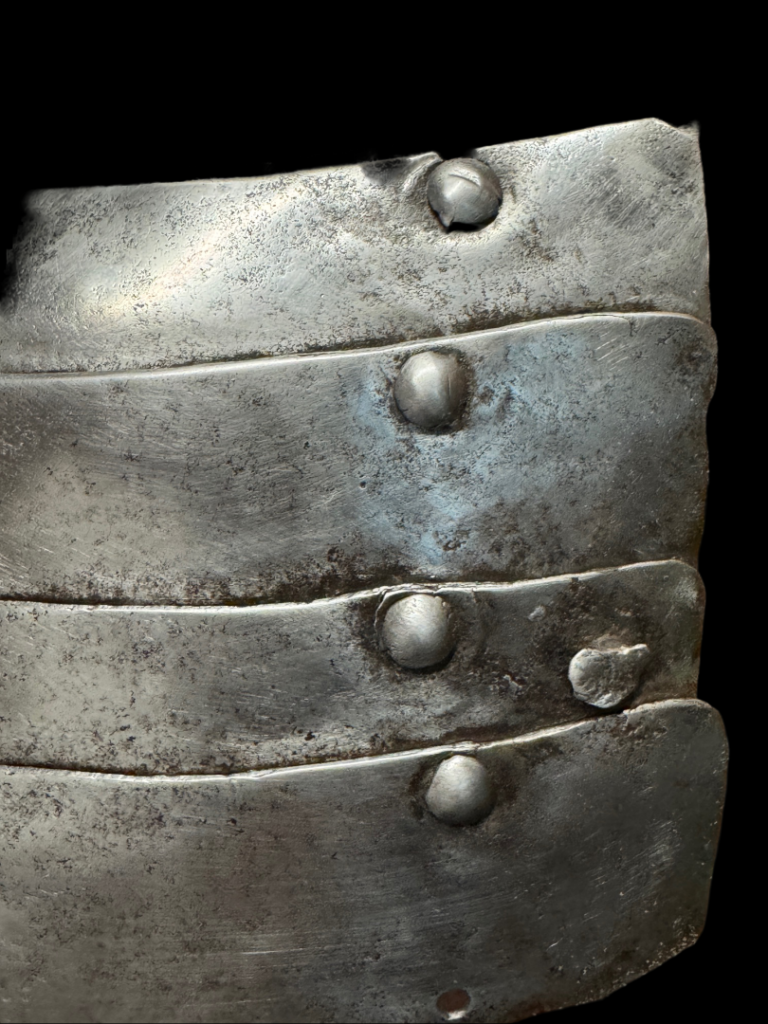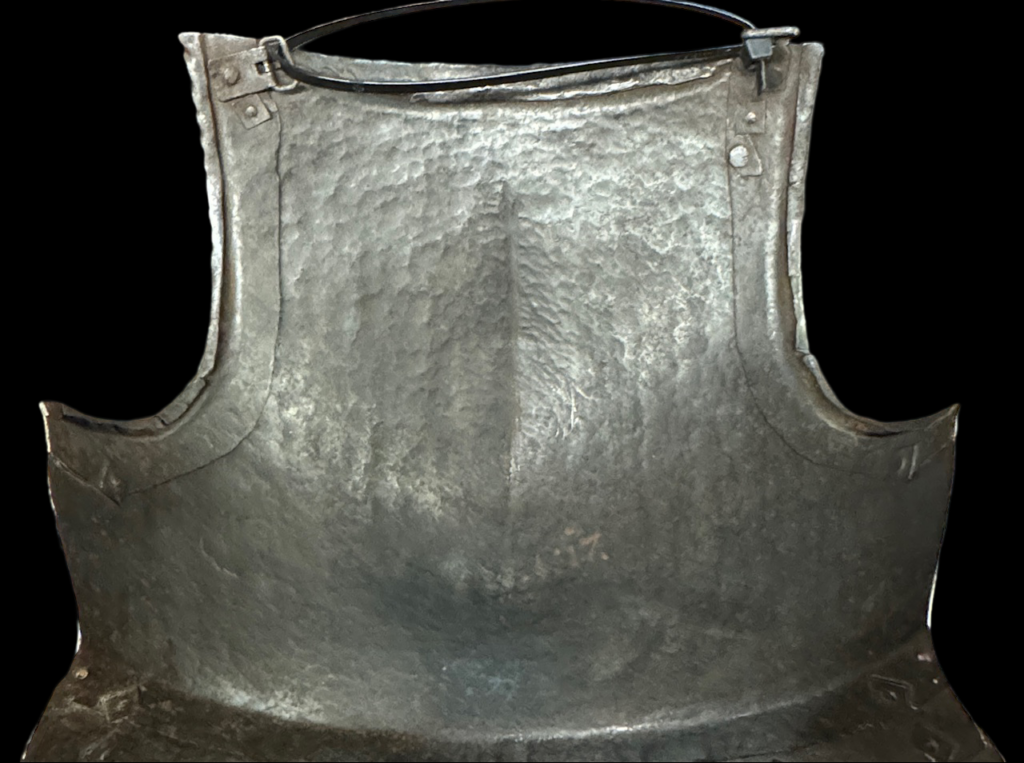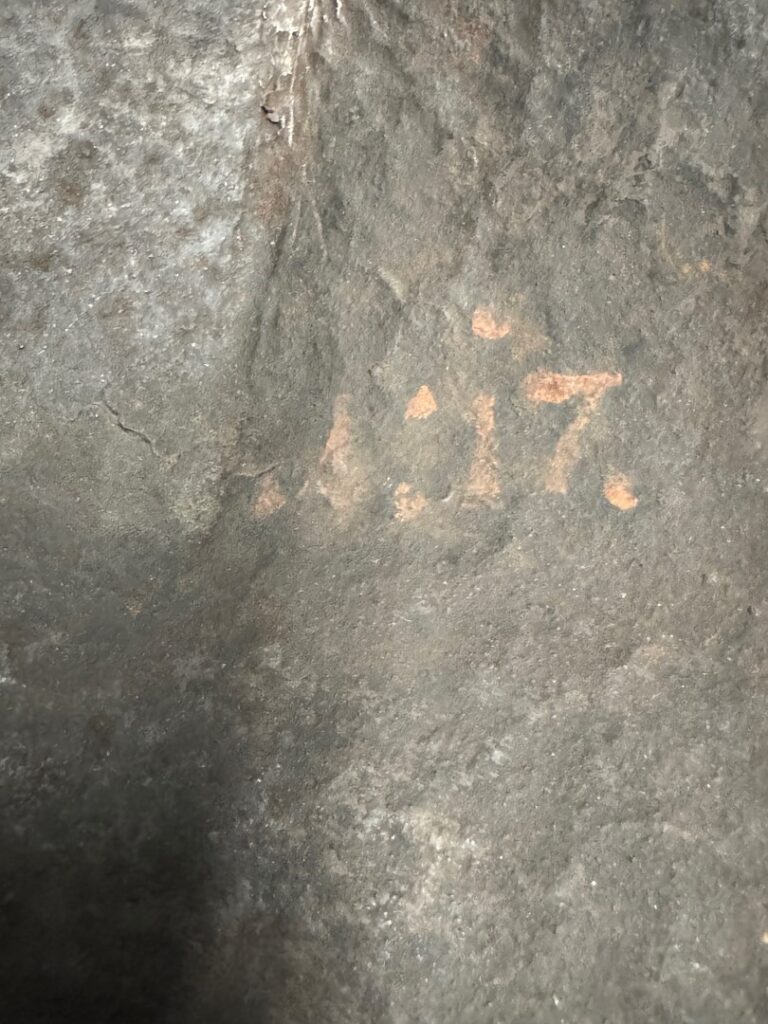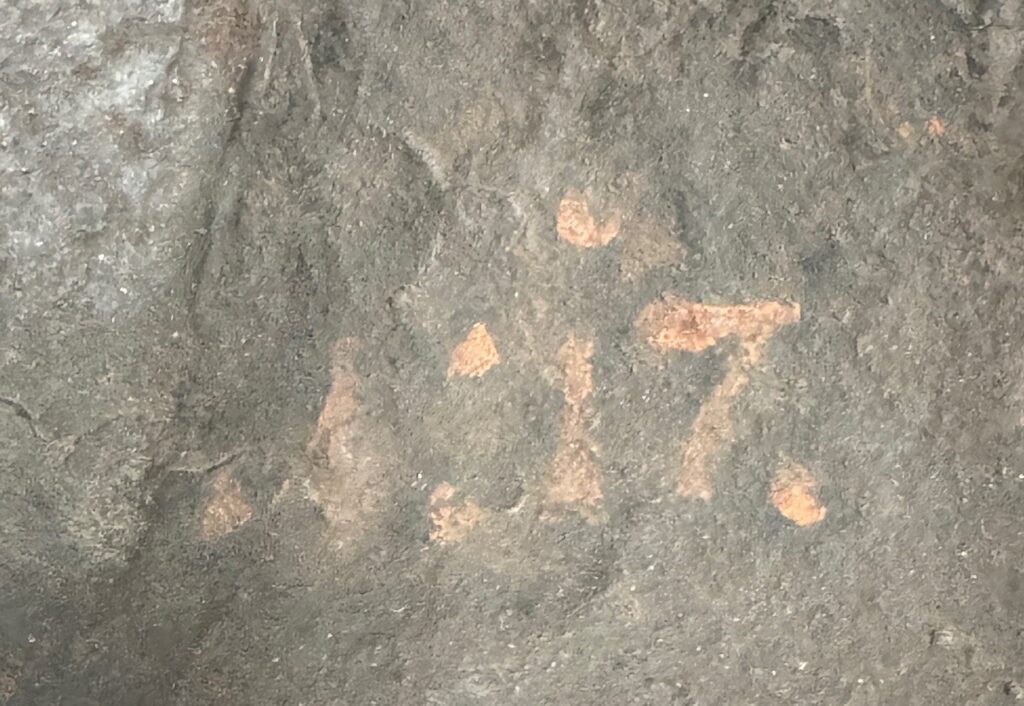1789) IMPRESSIVE ITALIAN DEEP BELLIED BREASTPLATE CIRCA 1540: From 1540 to 1560, the breastplate developed by the Italians had a “deep-bellied form” such as this example. They are highly sought out by collectors and rare in the marketplace. This is the only example of this type I have had in 40 years.
Description: Masterfully constructed with a deep spherical bellied one-piece main plate, roping at the edges turning inwards with movable gussets at the arm openings. Holes at the waist plate to attach a fauld of four lames, possibly original or working life.
Arsenal inventory control # Y 17 in red ink on the backside.
Condition: Museum quality.
Introduction: Breastplates emulated the form and fashion of the contemporary civilian doublet (a man’s short-fitting padded jacket). During the first 40 years of the 1500s, breastplates were spherical/bulbous at the belly and called globose with strong turns at the edges. The gussets had movement and a narrower waist plate with a laminated fauld to which a set of tassets (see page 139 in my book) were attached. The tassets can be attached by rivets, hinges, buckles, and straps; the fauld is held by rivets and washers.
During the first two decades, the Italians produced a more spherical breastplate that they called “bombe”. Bombe can be fluted in the Maximilian fashion or smooth. From 1540 to 1560, the breastplate developed a “deep-bellied form” (see page 173-#5 and #6 in my book). From 1560 to circa 1600, the deep-bellied form was replaced by the peascod (see page 173-#7), an exaggerated, deeper V-shaped belly.
Discussion: Helmets and breastplates are the most sought-after by collectors and people looking for a unique decoration of historical value. Helmets are the earliest form of body armor. Both aristocratic knights and simple infantrymen used them. Helmets are the most difficult item to make in a suit of armor. Because of their elegance, workmanship, and symbolism of power and chivalry, helmets are readily accepted by most as works of art, even by non-collectors. The breastplate is second only to the helmet. Even a person who knows very little about Arms and Armor will recognize a Medieval/Renaissance helmet or breastplate. If you collect greaves (see pages 122-BB and 123-BB in my book), few people may know what they are or find them aesthetically pleasing. Like a fine statue, breastplates display well on flat surfaces such as shelves, tables, or desks. Breastplates are also displayed easily on the wall, like a fine painting.
Conclusion: I have an identical breastplate in my collection. An early breastplate such as this is always in demand by collectors. Bear in mind, if this breastplate were only 30-40 years earlier, it would be a Gothic breastplate with a price tag of at least 5 times more than this breastplate! Dollar for dollar, you are getting a lot of bang/value for your dollar. This is the only example of this type I have had in 40 years. ACT-NOW and avoid disappointment. The owner says sell today and has dropped the price!!!*
All my items come with the following:
–Free shipping.
–10-day review period.
–Certificate of Authenticity.
– Free autographed copy of my book if you do not have one.
– In the event of an international shipment, we will help assign the lowest correct Customs tariff so you pay the least as little as 5% or even nothing.
I believe you will be very pleased. ACT-NOW!!!*

